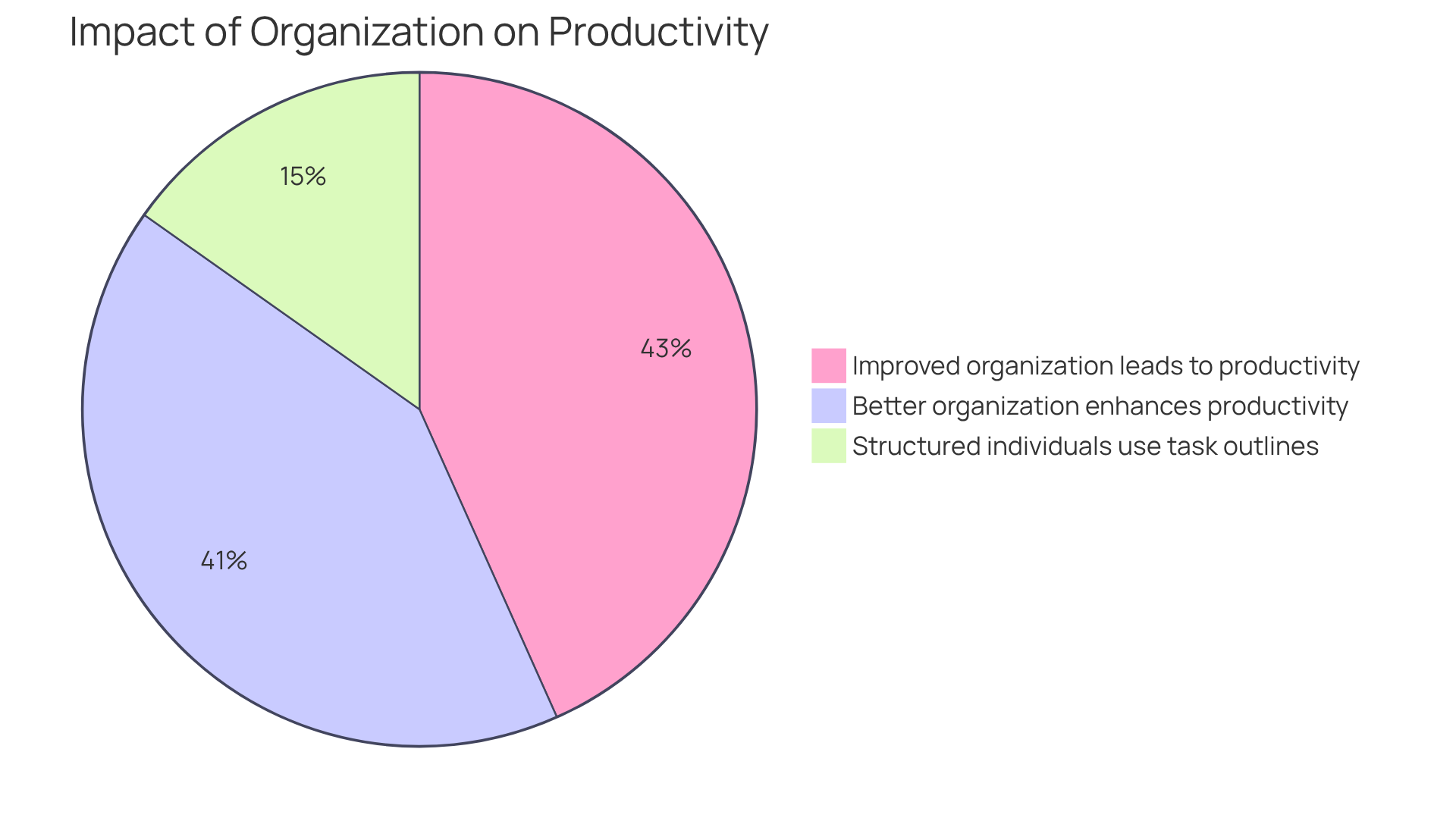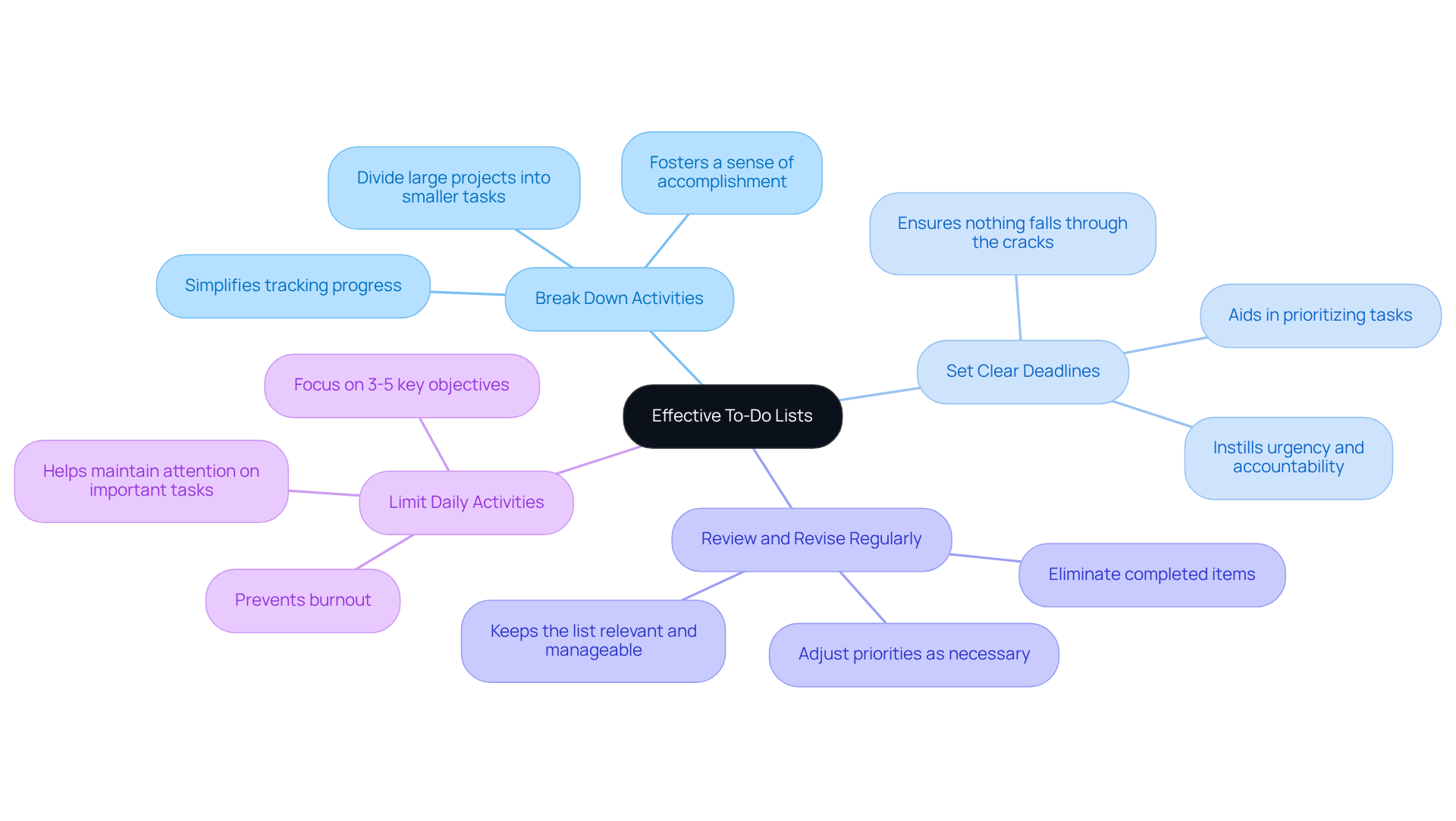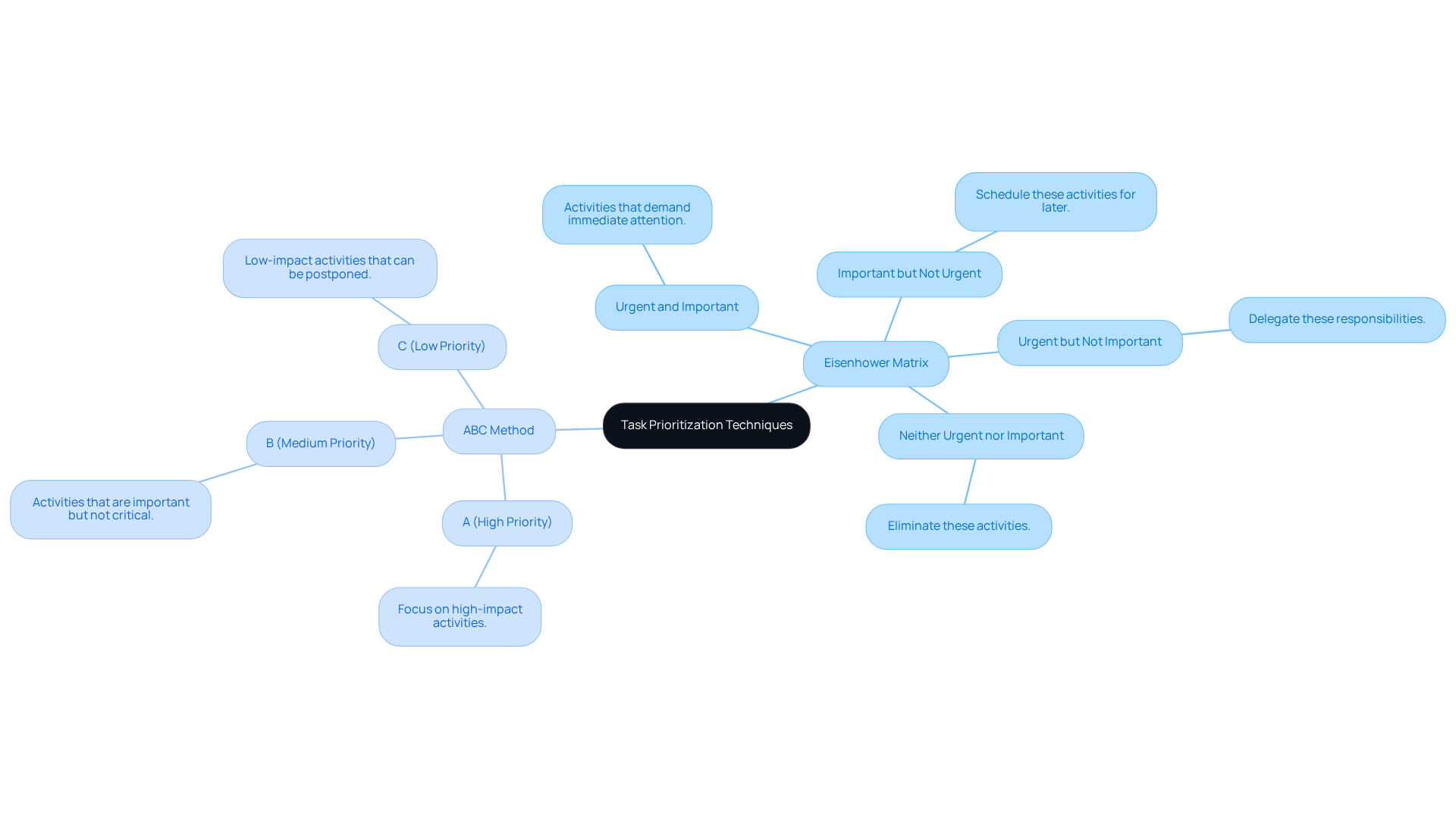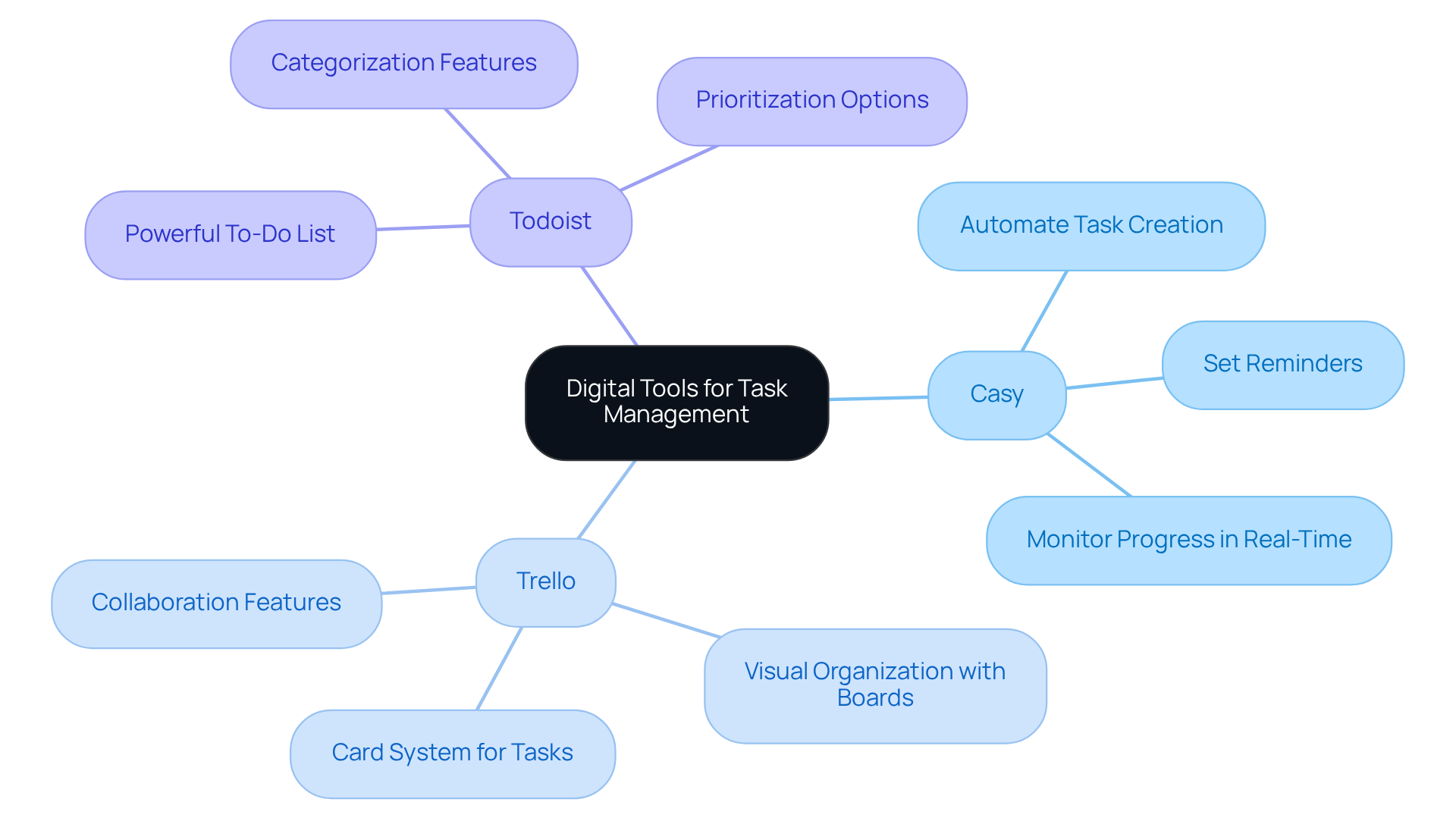Overview
The article delineates four proven strategies for crafting an effective to-do list:
- Breaking down tasks
- Setting clear deadlines
- Regularly reviewing and revising the list
- Limiting daily activities
These strategies not only enhance productivity but also promote organization and focus. Research substantiates this, demonstrating that structured task management significantly alleviates anxiety and boosts overall efficiency. By implementing these strategies, readers can take decisive steps toward improved task management and productivity.
Introduction
A well-crafted to-do list transcends a mere collection of tasks; it emerges as a formidable ally in the pursuit of productivity and organization. By harnessing effective strategies, individuals can metamorphose their lists into dynamic tools that not only streamline responsibilities but also alleviate stress and sharpen focus. Yet, many grapple with common pitfalls, such as:
- Overwhelming schedules
- Ineffective prioritization
How can one master the art of the to-do list to unlock its full potential and ensure that crucial tasks don’t slip through the cracks?
Understand the Purpose of a To-Do List
A to do list serves as a powerful tool for efficiently managing time and organizing activities. Its primary purpose is to maintain a to do list that records all tasks that must be completed, providing a clear summary of responsibilities. This clarity significantly reduces anxiety and overwhelm, enabling individuals to concentrate on executing tasks rather than merely remembering them. Studies indicate that:
- 90% of people believe better time organization enhances productivity.
- A well-structured task schedule is crucial in this regard.
- 94% of respondents agree that improved time organization leads to increased productivity.
Additionally, a well-organized to do list fosters accountability by providing a tangible record of completed assignments and outstanding obligations. This visibility empowers teams to align their daily activities with overarching project goals, ultimately driving productivity and efficiency. For instance, research reveals that:
- 33% of structured individuals utilize task outlines for time coordination, underscoring their effectiveness in maintaining focus and order.
In practical scenarios, experts who employ checklists report diminished anxiety levels and improved project management. By prioritizing tasks based on urgency and significance, as advocated by the Eisenhower Matrix, individuals can effectively develop a to do list that transforms chaos into order, resulting in enhanced productivity and reduced stress. The Eisenhower Matrix, which categorizes tasks into four quadrants based on urgency and significance, can be effectively used alongside checklists to ensure that the most critical items are addressed first.
However, it is essential to remain aware of common pitfalls when using task organizers, such as the risk of overloading the schedule or failing to prioritize tasks effectively. Understanding the purpose of a task organizer is vital for teams aiming to improve their workflows and achieve their objectives. As productivity experts highlight:
- "87.7% of business owners face mental health challenges," underscoring the importance of efficient time management strategies like task organizers in alleviating stress and enhancing overall well-being.

Implement Proven Strategies for Effective To-Do Lists
To create an effective to-do list, consider the following strategies:
-
Break Down Activities: Have you ever felt overwhelmed by a large project? Dividing it into smaller, manageable components can alleviate that stress. This approach not only simplifies tracking progress but also fosters a sense of accomplishment as you check off each task.
-
Set Clear Deadlines: Do you struggle with procrastination? Assigning deadlines to each activity instills a sense of urgency and accountability. This method aids in prioritizing tasks according to their timelines, ensuring that nothing falls through the cracks.
-
Review and Revise Regularly: How often do you evaluate your to-do list? Frequent assessments allow you to eliminate completed items and adjust priorities as necessary. This practice keeps your list relevant and manageable, adapting to your evolving needs.
-
Limit Daily Activities: Are you trying to do too much in a single day? Focusing on a maximum of 3-5 key objectives each day prevents burnout and helps maintain your attention on what truly matters.
By implementing these strategies, teams can turn their to-do list into an effective productivity tool, paving the way for greater success.

Prioritize Tasks Using Effective Techniques
Effective prioritization techniques can significantly enhance productivity in any organization. One widely recognized method is the Eisenhower Matrix, which classifies activities into four distinct quadrants:
- Urgent and Important: These activities demand immediate attention.
- Important but Not Urgent: Schedule these activities for later to ensure they are accomplished without the pressure of urgency.
- Urgent but Not Important: Delegate these responsibilities whenever possible to free up time for more essential tasks.
- Neither Urgent nor Important: These activities should be eliminated to prevent squandering valuable resources.
Another effective technique is the ABC Method, which categorizes activities into three groups: A (high priority), B (medium priority), and C (low priority). This approach empowers teams to focus on high-impact activities that align with their strategic objectives. For instance, startups that implement these prioritization techniques often report improved decision-making and enhanced productivity, as they can concentrate their efforts on what truly matters.
Integrating these approaches into daily routines not only simplifies the management of the to-do list but also fosters a culture of efficiency. As Dwight D. Eisenhower famously noted, "What is important is seldom urgent and what is urgent is seldom important," underscoring the necessity for thoughtful prioritization in achieving long-term success.

Leverage Digital Tools for Enhanced Task Management
Harnessing digital tools can significantly enhance task management efficiency. Consider Casy, which integrates seamlessly with communication platforms, automatically capturing activities from conversations and transforming them into actionable lists. Other widely-used project management tools, such as Trello, utilize boards and cards for visual organization, while Todoist provides a powerful to-do list with features for categorization and prioritization. By leveraging these tools, teams can:
- Automate task creation
- Set reminders
- Monitor progress in real-time
This capability allows them to concentrate on their core activities without the burden of manual updates. Not only does this enhance efficiency, but it also promotes collaboration among team members. Are you ready to elevate your team's productivity?

Conclusion
A well-structured to-do list transcends a mere compilation of tasks; it serves as a vital instrument for enhancing productivity and organization. By grasping its purpose and employing effective strategies, individuals can transform their lists into formidable allies that streamline responsibilities, minimize stress, and sharpen focus.
This article underscores several key approaches to crafting an effective to-do list:
- Breaking down larger projects into manageable tasks
- Setting clear deadlines
- Regularly reviewing and revising the list
- Limiting daily activities to a few key objectives
Moreover, prioritization techniques such as the Eisenhower Matrix and the ABC Method empower users to concentrate on what truly matters, ensuring that essential tasks are addressed first. Additionally, leveraging digital tools enhances task management, automating processes and fostering collaboration among team members.
Ultimately, the significance of mastering the art of the to-do list cannot be overstated. By implementing these proven strategies, individuals and teams can unlock their full potential, leading to improved productivity and a healthier work-life balance. Embracing effective task management practices is not merely about completing tasks; it is about cultivating an environment where focus, efficiency, and well-being thrive.
Frequently Asked Questions
What is the primary purpose of a to-do list?
The primary purpose of a to-do list is to efficiently manage time and organize activities by recording all tasks that must be completed, providing a clear summary of responsibilities.
How does a well-structured to-do list affect anxiety and overwhelm?
A well-structured to-do list significantly reduces anxiety and overwhelm by allowing individuals to concentrate on executing tasks instead of merely remembering them.
What percentage of people believe that better time organization enhances productivity?
Studies indicate that 90% of people believe better time organization enhances productivity.
How does a to-do list foster accountability?
A to-do list fosters accountability by providing a tangible record of completed assignments and outstanding obligations, which helps teams align their daily activities with overarching project goals.
What is the Eisenhower Matrix and how is it used with a to-do list?
The Eisenhower Matrix categorizes tasks into four quadrants based on urgency and significance. It can be used alongside checklists to prioritize tasks effectively, ensuring that the most critical items are addressed first.
What are some common pitfalls when using task organizers?
Common pitfalls include overloading the schedule or failing to prioritize tasks effectively, which can hinder productivity.
What impact do efficient time management strategies have on mental health?
Efficient time management strategies, such as task organizers, can alleviate stress and enhance overall well-being, as highlighted by the fact that 87.7% of business owners face mental health challenges.




